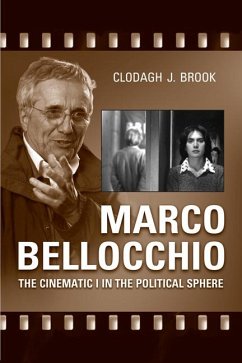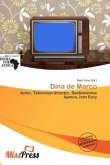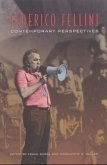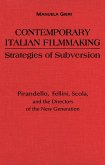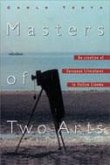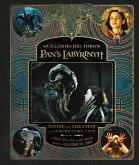- Gebundenes Buch
- Merkliste
- Auf die Merkliste
- Bewerten Bewerten
- Teilen
- Produkt teilen
- Produkterinnerung
- Produkterinnerung
Including work on psychoanalysis, politics, film production, autobiography, and the relationship between film tradition and contemporary culture, Marco Bellocchio touches on fundamental issues in film analysis.
Andere Kunden interessierten sich auch für
![Dina de Marco Dina de Marco]() Dina de Marco19,99 €
Dina de Marco19,99 €![Federico Fellini Federico Fellini]() Federico Fellini55,99 €
Federico Fellini55,99 €![Contemporary Italian Filmmaking Contemporary Italian Filmmaking]() Manuela GieriContemporary Italian Filmmaking134,99 €
Manuela GieriContemporary Italian Filmmaking134,99 €![Masters of Two Arts Masters of Two Arts]() Carlo TestaMasters of Two Arts117,99 €
Carlo TestaMasters of Two Arts117,99 €![Federico Fellini Federico Fellini]() Federico Fellini117,99 €
Federico Fellini117,99 €![Guillermo del Toro's Pan's Labyrinth Guillermo del Toro's Pan's Labyrinth]() Nick NunziataGuillermo del Toro's Pan's Labyrinth44,99 €
Nick NunziataGuillermo del Toro's Pan's Labyrinth44,99 €![Hitchcock's Stars Hitchcock's Stars]() Lesley L CoffinHitchcock's Stars40,99 €
Lesley L CoffinHitchcock's Stars40,99 €-
-
-
Including work on psychoanalysis, politics, film production, autobiography, and the relationship between film tradition and contemporary culture, Marco Bellocchio touches on fundamental issues in film analysis.
Hinweis: Dieser Artikel kann nur an eine deutsche Lieferadresse ausgeliefert werden.
Hinweis: Dieser Artikel kann nur an eine deutsche Lieferadresse ausgeliefert werden.
Produktdetails
- Produktdetails
- Verlag: University of Toronto Press
- Seitenzahl: 272
- Erscheinungstermin: 24. April 2010
- Englisch
- Abmessung: 236mm x 163mm x 21mm
- Gewicht: 481g
- ISBN-13: 9780802097101
- ISBN-10: 0802097103
- Artikelnr.: 28522638
- Herstellerkennzeichnung
- Libri GmbH
- Europaallee 1
- 36244 Bad Hersfeld
- gpsr@libri.de
- Verlag: University of Toronto Press
- Seitenzahl: 272
- Erscheinungstermin: 24. April 2010
- Englisch
- Abmessung: 236mm x 163mm x 21mm
- Gewicht: 481g
- ISBN-13: 9780802097101
- ISBN-10: 0802097103
- Artikelnr.: 28522638
- Herstellerkennzeichnung
- Libri GmbH
- Europaallee 1
- 36244 Bad Hersfeld
- gpsr@libri.de
by Clodagh J. Brook
TABLE OF CONTENTS
Table of Contents
Note on the Text
Acknowledgements
Chapter One. Auteur and Autobiograpy
Constructing an Auteur
Collaboration and Production
The Zigzagging Path
Bobbio and My Mother's Smile: Autobiography in Bellocchio's Cinema
Conclusion
Chapter Two. Bellocchio's Political Cinema in the Sixties and Seventies
The Problems of Impegno in the Era of Postmodernism
The Nature of Bellocchio's Impegno
La Cina è vicina, "Discutiamo, discutiamo", and Pre-Contestation Impegno
The Militant Documentaries, Nel nome del padre, Marcia trionfale:
Contestation, Impegno, Collectivity
Conclusion
Chapter Three. The Dreaming "I": Interiority and Massimo Fagioli's "Model"
of the Unconscious
Massimo Fagioli and Group Therapy
Massimo Fagioli's "Model" of the Unconscious
The Calm Sea and Inner Child: Salto nel vuoto and Il sogno della farfalla
Sex, Women, and Irrationality: La visione del Sabba and La condanna
Screening the "I": Styles of Interiority
The Oneiric and States of Hesitation
Space and the Unconscious, or the House as Psyche: Salto nel vuoto and
Diavolo in corpo
Temporality and the Unconscious: Enrico IV and the Chronotrap
Conclusion
Chapter Four. Bellocchio's Political Cinema from the Eighties to the
Present
Italian Terrorism: Buongiorno, notte
Chapter Five. The Rebel "I": Patriarchy and Parents
The Woman as Rebel: Politics and Patriarchy
Rebellion in the Name of the Father and Family: I pugni in tasca, Il
Principe di Homburg, L'ora di religione
Conclusion
Chapter Six. Tradition and its Discontents
Adaptations and Citations: Pirandello, Manzoni, and the Overturning of the
Father-Text
Conclusions. Private Cinema in a Public Sphere
Bibliography
Index
Table of Contents
Note on the Text
Acknowledgements
Chapter One. Auteur and Autobiograpy
Constructing an Auteur
Collaboration and Production
The Zigzagging Path
Bobbio and My Mother's Smile: Autobiography in Bellocchio's Cinema
Conclusion
Chapter Two. Bellocchio's Political Cinema in the Sixties and Seventies
The Problems of Impegno in the Era of Postmodernism
The Nature of Bellocchio's Impegno
La Cina è vicina, "Discutiamo, discutiamo", and Pre-Contestation Impegno
The Militant Documentaries, Nel nome del padre, Marcia trionfale:
Contestation, Impegno, Collectivity
Conclusion
Chapter Three. The Dreaming "I": Interiority and Massimo Fagioli's "Model"
of the Unconscious
Massimo Fagioli and Group Therapy
Massimo Fagioli's "Model" of the Unconscious
The Calm Sea and Inner Child: Salto nel vuoto and Il sogno della farfalla
Sex, Women, and Irrationality: La visione del Sabba and La condanna
Screening the "I": Styles of Interiority
The Oneiric and States of Hesitation
Space and the Unconscious, or the House as Psyche: Salto nel vuoto and
Diavolo in corpo
Temporality and the Unconscious: Enrico IV and the Chronotrap
Conclusion
Chapter Four. Bellocchio's Political Cinema from the Eighties to the
Present
Italian Terrorism: Buongiorno, notte
Chapter Five. The Rebel "I": Patriarchy and Parents
The Woman as Rebel: Politics and Patriarchy
Rebellion in the Name of the Father and Family: I pugni in tasca, Il
Principe di Homburg, L'ora di religione
Conclusion
Chapter Six. Tradition and its Discontents
Adaptations and Citations: Pirandello, Manzoni, and the Overturning of the
Father-Text
Conclusions. Private Cinema in a Public Sphere
Bibliography
Index
TABLE OF CONTENTS
Table of Contents
Note on the Text
Acknowledgements
Chapter One. Auteur and Autobiograpy
Constructing an Auteur
Collaboration and Production
The Zigzagging Path
Bobbio and My Mother's Smile: Autobiography in Bellocchio's Cinema
Conclusion
Chapter Two. Bellocchio's Political Cinema in the Sixties and Seventies
The Problems of Impegno in the Era of Postmodernism
The Nature of Bellocchio's Impegno
La Cina è vicina, "Discutiamo, discutiamo", and Pre-Contestation Impegno
The Militant Documentaries, Nel nome del padre, Marcia trionfale:
Contestation, Impegno, Collectivity
Conclusion
Chapter Three. The Dreaming "I": Interiority and Massimo Fagioli's "Model"
of the Unconscious
Massimo Fagioli and Group Therapy
Massimo Fagioli's "Model" of the Unconscious
The Calm Sea and Inner Child: Salto nel vuoto and Il sogno della farfalla
Sex, Women, and Irrationality: La visione del Sabba and La condanna
Screening the "I": Styles of Interiority
The Oneiric and States of Hesitation
Space and the Unconscious, or the House as Psyche: Salto nel vuoto and
Diavolo in corpo
Temporality and the Unconscious: Enrico IV and the Chronotrap
Conclusion
Chapter Four. Bellocchio's Political Cinema from the Eighties to the
Present
Italian Terrorism: Buongiorno, notte
Chapter Five. The Rebel "I": Patriarchy and Parents
The Woman as Rebel: Politics and Patriarchy
Rebellion in the Name of the Father and Family: I pugni in tasca, Il
Principe di Homburg, L'ora di religione
Conclusion
Chapter Six. Tradition and its Discontents
Adaptations and Citations: Pirandello, Manzoni, and the Overturning of the
Father-Text
Conclusions. Private Cinema in a Public Sphere
Bibliography
Index
Table of Contents
Note on the Text
Acknowledgements
Chapter One. Auteur and Autobiograpy
Constructing an Auteur
Collaboration and Production
The Zigzagging Path
Bobbio and My Mother's Smile: Autobiography in Bellocchio's Cinema
Conclusion
Chapter Two. Bellocchio's Political Cinema in the Sixties and Seventies
The Problems of Impegno in the Era of Postmodernism
The Nature of Bellocchio's Impegno
La Cina è vicina, "Discutiamo, discutiamo", and Pre-Contestation Impegno
The Militant Documentaries, Nel nome del padre, Marcia trionfale:
Contestation, Impegno, Collectivity
Conclusion
Chapter Three. The Dreaming "I": Interiority and Massimo Fagioli's "Model"
of the Unconscious
Massimo Fagioli and Group Therapy
Massimo Fagioli's "Model" of the Unconscious
The Calm Sea and Inner Child: Salto nel vuoto and Il sogno della farfalla
Sex, Women, and Irrationality: La visione del Sabba and La condanna
Screening the "I": Styles of Interiority
The Oneiric and States of Hesitation
Space and the Unconscious, or the House as Psyche: Salto nel vuoto and
Diavolo in corpo
Temporality and the Unconscious: Enrico IV and the Chronotrap
Conclusion
Chapter Four. Bellocchio's Political Cinema from the Eighties to the
Present
Italian Terrorism: Buongiorno, notte
Chapter Five. The Rebel "I": Patriarchy and Parents
The Woman as Rebel: Politics and Patriarchy
Rebellion in the Name of the Father and Family: I pugni in tasca, Il
Principe di Homburg, L'ora di religione
Conclusion
Chapter Six. Tradition and its Discontents
Adaptations and Citations: Pirandello, Manzoni, and the Overturning of the
Father-Text
Conclusions. Private Cinema in a Public Sphere
Bibliography
Index

